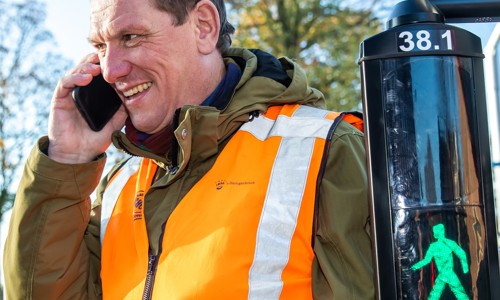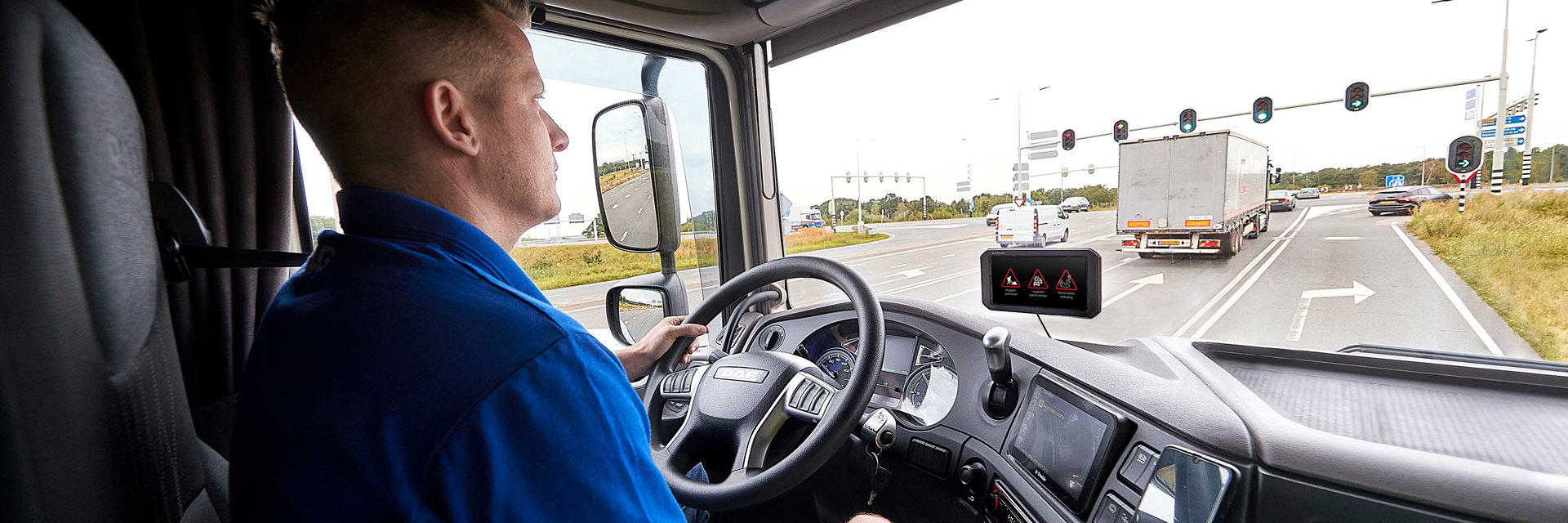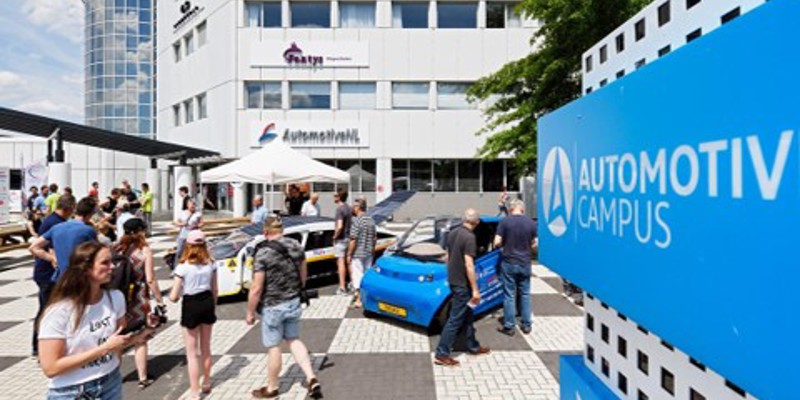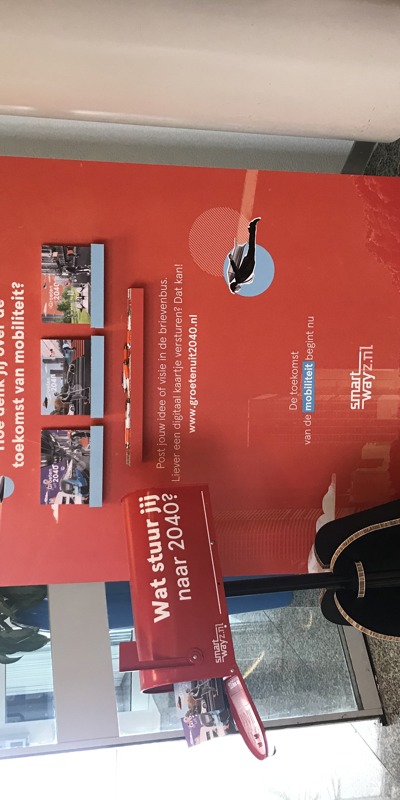
The municipality of Helmond has 52 traffic control systems, of which 42 have now been made intelligent. The other ten will follow later this year. The municipality of 's-Hertogenbosch has 65 systems, of which 35 are intelligent. In both municipalities these iVRIs are also truly connected and therefore active and ready to communicate with on-board units in vehicles and with, for example, apps on road users' smartphones.
Thanks to this arsenal of active iVRIs, these municipalities are leading the way in the Netherlands. "We have the Automotive Campus in Helmond, so we've already been a testing ground for these types of innovations for a decade or so', explains Tamara Goldsteen, Helmond Mobility programme manager.
The municipality of 's-Hertogenbosch is also keeping a keen eye on new traffic technology. For the municipality's traffic control specialist, Eric Greweldinger, it is simple: "Anything that increases traffic safety, or prevents unnecessary waiting is of interest to road users."
Prioritisation
In that respect intelligent traffic control systems indeed have a great deal to offer. The fact that a) you can control iVRIs from the cloud and b) the systems can communicate with (connected) road users offers unique opportunities. Take, for example, the prioritisation use case which means that certain traffic target groups get the green light more frequently, earlier, or for longer, for example for public transport, cyclists or freight traffic. However, the iVRI can also assign that priority, more or less absolutely, to emergency and support service vehicles that are rushing to an incident with sirens and blue lights.
"The idea of giving the green light to the emergency services is not, in itself, anything new", explains Eric. "Dynamic traffic light systems like Vetag, Vecom, Opticom and KAR have already been around for some time. However, an iVRI offers even more possibilities." One key benefit of the iVRI is, for example, that emergency and support service vehicles are digitally visible all the time in the shared iVRI cloud environment and it is also immediately clear when they have their lights and sirens on. As a result an iVRI knows well in advance that they are heading its way and can take action soon, for example by removing waiting traffic to give the emergency service vehicle a truly free passage. The iVRI can also send out messages to other connected road users nearby telling them: 'Look out! An emergency service vehicle is on its way from that direction.'
Tamara adds, "Every year there are around 70 accidents in the Netherlands involving emergency service vehicles which are forced to go through a red light. If we can prevent these accidents with an iVRI and also provide targeted information to other road users, safety will only improve."
Testing and fine-tuning
This is something that both municipalities are heavily involved in. In the spring of 2019 's-Hertogenbosch started a pilot aimed at ambulances. As Eric explains, "We are doing that in the context of the national Talking Traffic programme. We started on a small scale with a single iVRI to see whether everything worked properly from a technical perspective. After that we started testing on a route close to the hospital. Since the spring of 2021 all our iVRIs have been fitted with the application to give priority to ambulances with blue lights and sirens."
All that is required for that roll-out is to install new software remotely on the iVRIs. "Ambulances in the region were already equipped with the required 4G equipment to enable them to communicate with the traffic lights.[1] So the implementation was actually not that much work."
That enabled us to focus all our attention on testing and fine tuning. This was partly a technical process. For example, the mapping of the connected vehicles was initially quite a challenge. However, attention also had to be paid to practical aspects. "Before we started this trial public transport vehicles were the only ones to be given priority at traffic lights. We had to point out to the drivers of these vehicles that they now had to be careful because their green light could, from now on, be overruled. When it came to cyclists we had to bear other considerations in mind. Because ambulances can announce their arrival up to a maximum of five minutes before they reach an iVRI, we normally have sufficient time to guarantee a safe green light for cyclists. Having said that, however, an ambulance driver always has to be alert because there are always cyclists who will cross at the very last moment. When our waiting time predictor is about to indicate a green light at bicycle traffic lights, that is also what cyclists will get.
Since 2017 Helmond has been participating in the European C-Mobile project and is focusing, in that context, on the police and fire brigade. "As far as the communication options are concerned our iVRIs are hybrid and can communicate via both 4G and via wifi-P", explains Tamara. "In C-Mobile we are now working with wifi-P, but it is all compatible and everything runs within the same iVRI (cloud) environment as the Talking Traffic applications."
In Helmond the pilot is also aimed at learning lessons and sharing them. This allows, for example, minor programming errors or updating glitches to be detected. However, there are also practical and functional lessons to be learned. "There are various ways of setting up a priority service. You can ask yourself, for example, whether the emergency services would benefit from feedback about the speeds they need to keep to in order to get a green light? In consultation with the emergency services this is a road we have explicitly chosen not to go down. Things in the vehicle are often so hectic that extra action or information is the last thing they need. Their focus has to be on the road."
Roll-out
Thanks to the pilots the two municipalities are helping themselves, but also other road authorities, and all the lessons learned are going to be included in the Talking Traffic and C-Mobile programmes and reinforce the chain from vehicle to iVRI to cloud. Of course the most important thing is that Helmond and 's‑Hertogenbosch are able to improve safety.
Tamara provides some telling evaluation figures. "In 89% of instances that we give an emergency service vehicle priority, the vehicle in question is actually able to continue its journey without stopping at the controlled crossroads. If we also include the instances that they have to change their speed, the number even increases to 93%. All in all, they go through a red light 15% less frequently and there are 30% fewer conflicts (stops) compared to the situation without iVRI."
's-Hertogenbosch does not yet have evaluation data, but the experiences are just as positive. "The ambulance crews are all extremely enthusiastic", adds Eric.
As far as Tamara and Eric are concerned, the iVRI applications are here to stay. As Tamara concludes, "For us it is no longer a pilot, but a roll-out." Eric also wants to carry on building on the success they have achieved up to now. "I'd like to expand our ambulance project to the fire brigade and police. Avoiding the distress of just a single accident would be a result."
_____
SmartwayZ.NL is coordinating the roll-out and deployment of iVRIs in the south of the Netherlands. If you would like to find out more, pleas email Etienne Wieme, C-ITS project manager at the provincial government of Noord-Brabant.
[1] At the request of the Dutch Ambulance Service, all ambulances in the Netherlands are to be fitted with this 'Talking Traffic equipment' during the course of 2021.



